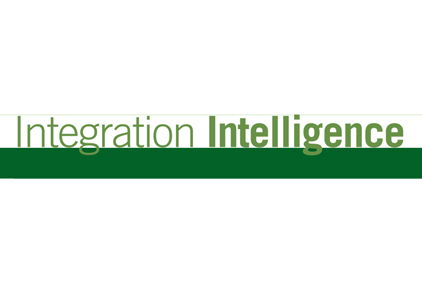In keeping with the spirit of the SDM “Going Green” issue this month, the question posed above seems appropriate and the answer appears to be yes. I am a big believer in major trends, or “unshakable facts” as I like to call them. These are usually global in nature and have impact across countries and cultures that cannot be explained away as part of a personal or business bias.
The BIG Three: cloud computing, social media, and mobility would fall into this category of “unshakable facts,” or more to the point, “it’s going to happen whether you like it or not.” The impact on the converged security market, today and moving into the future, will certainly experience this in spades — the biggest of the big three being the cloud. Thankfully, based on its growth projections, the cloud shows green economies of scale.
A number of emerging solutions are being created around these major trends. Big data analytics is one area that comes to mind and crosses multiple market segments, all utilizing the continuous growth of unstructured data such as the videos, texts, and maps that we interact with in social media every day. In fact, I heard a vice president of digital marketing for Macy’s speaking at a recent retail conference and citing a study that stated, “People between the ages of 16 and 24 send an average of 104 text messages per day.”
Social media sites combined with mobile computing devices are showing no signs of slowing down. In fact, the ability to make sense, or business intelligence, out of these huge volumes of information sources is where cloud computing shows the most promise in “green” value. As our need for big data grows, the cloud is elastic in its expansion capabilities and much more efficient than many thousands of separate enterprise IT departments.
The digital delivery and management of tons of information packets can be efficiently managed in the cloud through online software delivery and updates, remote video surveillance monitoring and data storage. Overall, cloud computing offers operating benefits and is less expensive to operate.
The green result is energy savings and reduced carbon emissions. Independent research underscores this point: “Pike Research’s analysis indicates that only the very largest of organizations — both commercial and governmental — will have the capital and expertise to achieve a similar level of efficiency at a comparable cost. As a result, we anticipate that much of the work done today in internal data centers will be outsourced to the cloud by 2020, resulting in significant reductions in energy consumption, associated energy expenses, and GHG emissions from data center operations versus a business as usual (BAU) scenario.”
It is a self-fulfilling prophecy; intelligent mobile devices in the hands of the global population connecting to each other and/or machines, and generating huge amounts of centrally managed data ready-made for cloud architectures. The good news is that the growth can be green.
Google also estimates a typical company or organization that migrates to the cloud could:
• Save an estimated 68–87 percent in energy for its office computing
• Reduce similar amounts of carbon emissions
Google states these findings are consistent with the actual savings achieved by the U.S. General Services Administration (GSA), a Google Apps client with approximately 17,000 users. By switching to Google Apps, GSA reduced server energy consumption by nearly 90 percent and carbon emissions by 85 percent.
This is not to say that other commercial and even residential security functions cannot be green. For example, consider how LED lighting has shown tremendous value in energy efficiencies with some lights lasting more than twenty years when compared to traditional fluorescent bulbs, and with an overall 50-70 percent cost savings. This is all good news.
There are green benefits to everything from the everyday light bulb to the emerging global cloud environment. Is the cloud green? Thankfully, yes!









